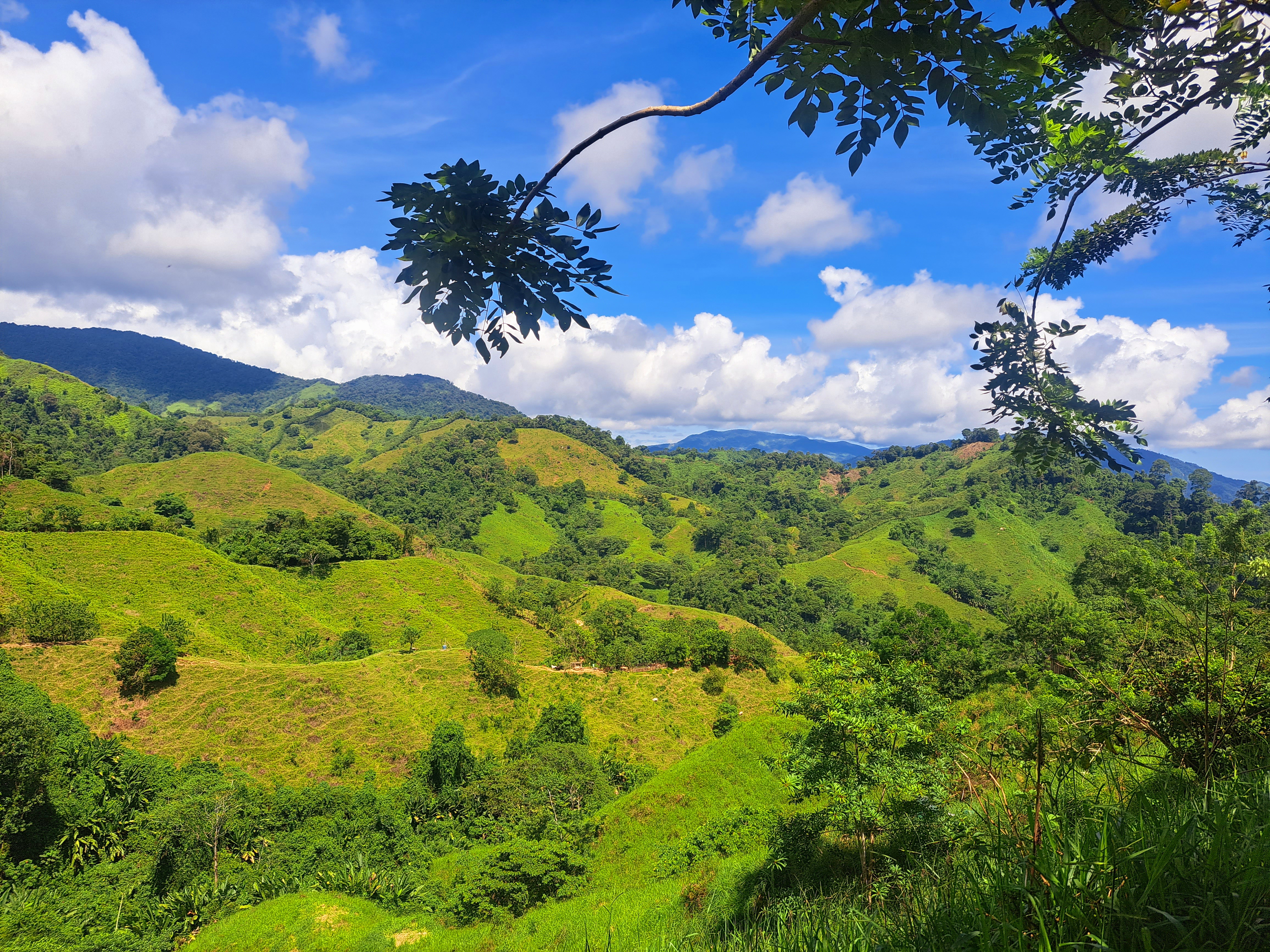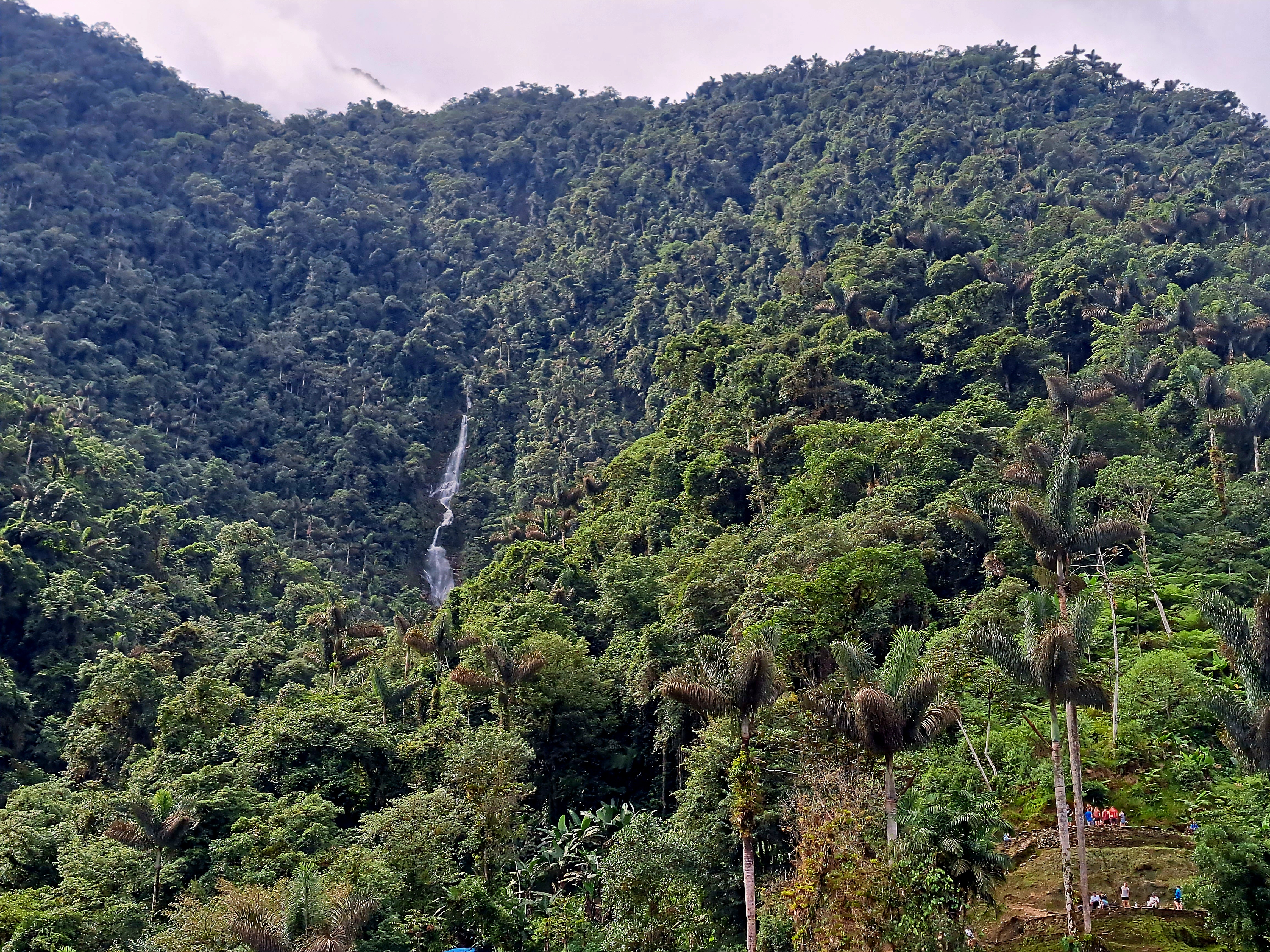
Tourism to Colombia’s Ciudad Perdida is a case study of what can occur when local Indigenous communities are allowed to manage their land, on their terms. But along with successes, this archeological jewel is also a tale of lost opportunities and missed potential. Today, we'll discuss the backstory of this archaeological wonder.
As the crow flies, it’s only 17 miles, but what the lay of the land means for many visitors is a grueling 40-mile trek (65 kms) that starts immediately, uphill, in clay, after a one-hour drive in a four-wheel drive van that traverses a road mostly comprised of mud and potholes. “Trail” is a generous term to describe this network of paths in Colombia’s Sierra Nevada de Santa Marta mountains; most of this trek involved sharp climbs, up and down. Rocks alternated with mud and clay. Any spend on Gortex boots from the likes of The North Face or Columbia was a whiffed investment as hikers had to constantly cross rivers and streams. Wake-up calls were at 4:50 each morning, with breakfast at 5:20 so everyone could hit the trails again by 6:00 a.m. All trekkers had to hustle as the September rains came in by 2:00 p.m. — mind you, the alternative to rainy season was doing this in the summer sunshine and heat. While most travel sites said this trek could be done by almost anyone, the very word “anyone” is a technicality: This trip is not for any person who isn’t physically fit.
So why would anyone subject themselves to this adventure, or when rain relentlessly falls in the afternoon, a misadventure? After all, this is a different world from the idyllic beach resorts that line Colombia’s nearby Caribbean coast, as one’s hiking clothes never got dry, legs were a buffet for insects no matter how much bug repellent was used, and clothes and even backpacks became tan- or rouge-colored as they became caked with mud and clay. The answer was simple: This schlep was the only way to visit Ciudad Perdida ("Lost City"), the ruins of a city built by the Tayrona (or Tairona) people, now a spectacular archeological site older than Machu Picchu and offers visitors a singular, spiritual experience that makes the trek well worth the effort.
The backstory of Ciudad Perdida
To understand the meaning of Ciudad Perdida requires a deep dive into its background and the people who surround it and, now, even thrive because of it. For Indigenous Colombians, it's finally payback time. As typical of the case with the arrival of the Spanish to what is now Latin America, the Tayrona people’s experience with the appearance of the Europeans in the 16th century was followed by decades and centuries of violence, disease, enslavement and fierce resistance.
At first, the Spaniards’ emergence on the Caribbean shores was met by the Tayrona with some tolerance, and a network of trade developed: The Spanish had items such as tools, while the Tayrona could offer gold in return. But as our guides explained to us, any such tolerance dissipated when the Tayrona realized they were receiving items of poor quality. As confrontations between the two peoples increased, the Tayrona were largely able to resist Spain’s colonial conquests during the seventeenth and even eighteenth centuries. But such resistance involved moving into far more remote areas of the Sierra Nevada where they could farm, live their lives and nimbly avoid repression from the people who fancied themselves as their European masters.
We then must fast forward to the twentieth century, long after the powers behind Spain, Nueva Granada and eventually, a separate and independent Colombia coincided with the Europeans’ ability, finally, to squelch any resistance from the region’s Indigenous peoples.
By the middle of the twentieth century, events such as the riots following the assassination of the Liberal leader and presidential candidate Jorge Eliécer Gaitán in April 1948, along with a military coup in 1953, foreshadowed years of violence that accelerated across Colombia during the 1960s. For years, many rural Colombians fled for what they hoped would be the safe havens of cities such as Bogotá and Medellín; and to a certain extent, some of that growth occurred in Santa Marta, the Caribbean port mostly known for its exports of bananas and coal to the rest of the Americas and anchors the modern day department of Magdalena.
An economic lifeline grows in the form of weed
By the 1970s, farmers and laborers (or cachacos) who were struggling to make ends meet long after the “banana boom” of the 1920s in and around the Sierra Nevada and Santa Marta found their economic salvation: marijuana. In the U.S., they found a thriving market as weed become the recreational drug of choice for more and more Americans during the late 1960s and 1970s. But the Nixon administration, which launched the U.S. Drug Enforcement Agency (DEA) in 1973, did not take kindly to the fact that Colombia was providing as much as 70 percent of the country’s marijuana. The same could be said for the subsequent Ford and Carter presidencies, and by the late 1970s, U.S. DEA agency were corroborating with Colombian authorities to wipe out the local weed trade. They did so by deploying chemical agents such as paraquat, which was effective at killing off marijuana farms but also poisoned much of the landscape.

Those scars are still visible today, as the shades of green that slather the Sierra Nevada mountains that face Colombia’s northern coast don’t reflect the country’s nature and rich biodiversity but rather, the legacy of deforestation resulting from the chemical warfare inflicted on local people and their land: many Indigenous families who had lived in the region for centuries found themselves caught in the proxy war’s crossfire. In the years to come, they’d face waves of similar wars, ones that resulted with riches for some and ended with heartbreak for many.
A new source of wealth emerges… coca leaves
By the 1980s, many of the farmers and cachacos who remained in the region started cultivating another plant: coca, the leaves of which were long important to local Indigenous cultures, and for Westerners, coveted as the source of cocaine. The cycle of boom and wealth accumulation, as our trek’s guides explained, continued again — a saga shared by expats who happened to live in Colombia during the 1980s.
By then, Ronald Reagan had scored the keys to the White House, and while his wife led a “Just Say No” campaign against drugs, that administration embarked on yet another campaign with its Colombian allies to tamp down another thriving market, and the spiral of violence in Colombia, its cities and rural areas continued.
Ciudad Perdida is ‘found again’
While Colombia and its people were embroiled in this violent boom, bust — and within much of the Sierra Nevada, a fumigation cycle — the ancient city of mention became “lost,” or should we clarify, had long become hidden by vegetation and was largely forgotten.
But that would suddenly change after a turkey hunting expedition resulted in a dead bird landing on an exposed stone staircase. Two rival families realized there was gold artifacts and other treasures within the hills, stone-lined concentric rings, terraces and tiled roads known as Ciudad Perdida. The plundering of such remains continued until an archeological team arrived at the scene in 1976, and for the next several years the scientists on site were able to keep the Ciudad Perdida closed off while they continued to research and excavate the 80-acre site.

But Ciudad Perdida could no longer be kept under wraps after a French tourist — determined to take on the surrounding jungle’s dangers even though he was hardly equipped to hike through it — ran into an archeological team in 1981 while he was determined to find what he believed was a place known as the “Lost City.” It was then that local authorities realized that keeping the place closed to the public was a fool’s errand, and Ciudad Perdida has been “open” since then. But open is a relative term, as the local authorities made the decision to keep access to the archeological site difficult: A policy that nixes any cars or any form of motorized transport, a decision still intact to this day.
Found, but again not visited
Another factor continued to keep visitors away: after a relative boom in tourism between 1985 and 2000, violence between the Colombian government’s armed forces and paramilitary groups kept foreign tourists away until a ceasefire declared in 2007 convinced adventurers to make the trek once again; more tour operators responded in kind.
By then it was agreed that the local Indigenous population would determine who could visit, how many, and at what cost.
It's clear local communities are benefitting financially; after all, they are running Ciudad Perdida's entire "value chain." Currently, all supplies, from the food cooked for trekkers to the bottles of red Gatorade ubiquitous at the kiosks topped with palm fronds along the trails, can only brought in by mules; motorbikes can do some of the hauling, but only to a certain point. Garbage, including plastic bottles, is hauled out by mules as well Keeping casual visitors away from Ciudad Perdida has left the site intact and its surroundings, for the most part, pristine.
And while the local Indigenous communities are finally able to profit from a sacred site that has been theirs all along, the steady stream of visitors brings its own risks: and therein lies the next part of this series about Ciudad Perdida, coming next week. Money is certainly flowing in — but questions fester over where it's going.
Image credits: Leon Kaye

Leon Kaye has written for 3p since 2010 and become executive editor in 2018. His previous work includes writing for the Guardian as well as other online and print publications. In addition, he's worked in sales executive roles within technology and financial research companies, as well as for a public relations firm, for which he consulted with one of the globe’s leading sustainability initiatives. Currently living in Central California, he’s traveled to 70-plus countries and has lived and worked in South Korea, the United Arab Emirates and Uruguay.
Leon’s an alum of Fresno State, the University of Maryland, Baltimore County and the University of Southern California's Marshall Business School. He enjoys traveling abroad as well as exploring California’s Central Coast and the Sierra Nevadas.














